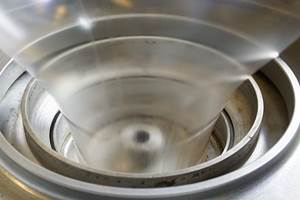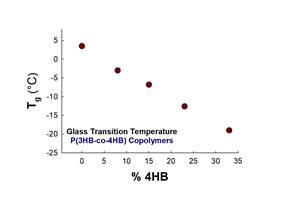106 Years of Coated Films: From Gift Wrap to Solar Panels
During its 106 years in operation, Madico Inc. in Woburn, Mass., has had to reinvent itself many times.
During its 106 years in operation, Madico Inc. in Woburn, Mass., has had to reinvent itself many times. One constant, however, has been its position as a technology leader in coating and laminating. The company began in 1903 as Hy-Syl Manufacturing in Revere, Mass., making leather postcards, then added gift wrap and ribbon production, and in 1935 became the first vacuum metalizer in North America, making gift wrap.
In the 1950s, as plastic films became available, Hy-Syl began to metalize clear substrates. By the '60s, Hy-Syl developed the first known transparent reflective window films for energy conservation. Imitation chrome was another emerging market for metalized films. By 1968, Hy-Syl had to expand, and a new company called Madico was formed to concentrate on solar control window films.
Madico's UV-protective film was ahead of its time and didn't attract a lot of attention until the oil embargo of the '70s, when saving energy took center stage. Van Leer N.V. in the Netherlands was so impressed by Madico's UV-blocking coatings that it bought the company, intending to expand it globally.
But energy saving went out of fashion once the embargo was over, and Van Leer lost interest in its expansion plans for Madico. Madico's managers bought the company back in 1983 and sold it in 1991 to a Japanese company, which merged with Lintec Corp. in Japan. Madico proved a perfect fit for Lintec, which is also strong in photovoltaic films and is expanding Madico's technology in Japan. Madico now has coating and laminating production in Woburn, Walled Lake, Mich., and two plants in Japan.
Meanwhile, Madico continued to invent new coating and laminating technologies for durable goods, including anti-scratch protective films; films to prevent electronic eavesdropping; and photovoltaic laminates&mash;primarily back sheets.
Back sheets for solar panels provide up to 25-year protection of solar panels against UV and moisture. Madico's greatest coup in back-sheet development was its early recognition that the solar panel industry would face severe shortages of Tedlar, Du Pont's bi-oriented PVF (polyvinyl fluoride) sheet, which has been the standard for photovoltaic back sheets for 30 years. Biax Tedlar is typically laminated on either side of BOPET film, a structure known as TPT.
First Madico, and later others, introduced back sheets that used less Tedlar. Madico won a DuPont Plunkett award in 2007 for a back-sheet laminate of Tedlar, BOPET, and a patented light-reflecting layer of EVA, which boosts the solar cell's power up to 5%. In late 2007, Madico introduced Protekt back sheets, which don't use any Tedlar. For UV protection, Protekt back sheets have a 13-micron perfluoroalkyl vinylether coating applied in a dispersion to a three-layer laminate of EVA, PET, and a weatherable coating&mash;for about one-third of the cost of standard Tedlar-PET-Tedlar back sheets.
“By now, 80% of the world's solar panel makers have completed certification of Protekt back sheets,” notes Robert Connelly, Madico's president. Last year Madico introduced Protekt TFB back sheet for thin-film solar applications. It's a four-layer laminate of 50-micron aluminum foil and PVF, PET, and EVA films. It boasts higher moisture barrier and durability than sputtered barrier films.
The key to Madico's speed in commercializing new inventions is a scalable pilot line in Woburn, which replicates all of Madico's production processes and can apply them in any order.
Related Content
Reduce Downtime and Scrap in the Blown Film Industry
The blown film sector now benefits from a tailored solution developed by Chem-Trend to preserve integrity of the bubble.
Read MoreFollow These Tips to Fire Up Your Cold Blown Film Line
Firing up a cold blown-film line after a shutdown involves multiple pieces of equipment that all interact. Here’s a look at those components individually and some best practices on how to get your line up and running as quickly and safely as possible.
Read MoreFilm Extrusion: Boost Mechanical Properties and Rate of Composting by Blending Amorphous PHA into PLA
A unique amorphous PHA has been shown to enhance the mechanical performance and accelerate the biodegradation of other compostable polymers PLA in blown film.
Read MoreWhat You Need to Know About Roll-Cooling Design
Cooling rolls might not look like high-tech machines, but the fact is there is a surprising amount of technology involved in their design, manufacture and use. Here’s what you need to know.
Read MoreRead Next
Beyond Prototypes: 8 Ways the Plastics Industry Is Using 3D Printing
Plastics processors are finding applications for 3D printing around the plant and across the supply chain. Here are 8 examples to look for at NPE2024.
Read MoreFor PLASTICS' CEO Seaholm, NPE to Shine Light on Sustainability Successes
With advocacy, communication and sustainability as three main pillars, Seaholm leads a trade association to NPE that ‘is more active today than we have ever been.’
Read MorePeople 4.0 – How to Get Buy-In from Your Staff for Industry 4.0 Systems
Implementing a production monitoring system as the foundation of a ‘smart factory’ is about integrating people with new technology as much as it is about integrating machines and computers. Here are tips from a company that has gone through the process.
Read More






















